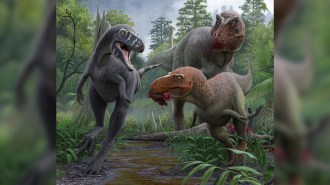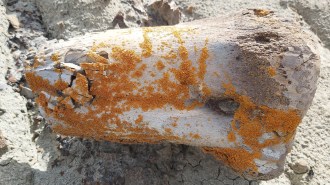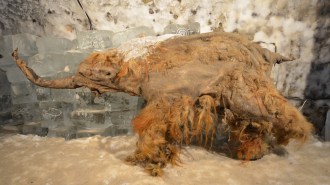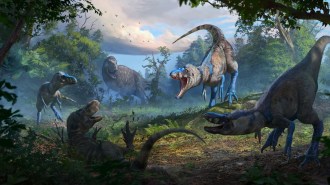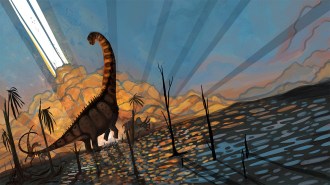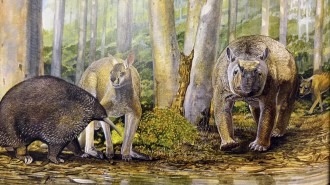Unknown creature made birdlike tracks
Paleontologists have unearthed a multitude of fossil footprints in sediments in northwest Argentina, and now there is a burning question they would love to answer: What left the tracks?


At first glance, the answer’s easy. The imprints are remarkably similar to those left by modern shorebirds, says Ricardo N. Melchor, a geologist at National University in La Pampa, Argentina. Most of the fossil tracks show three slender toes tipped by small claws, but some also bear the imprint of a small, rear-facing toe called a hallux. Because the three front-facing toes spread across a broad angle, the tracks are wider than they are long.
The footprints also record birdlike behavior. In one of the fossil-bearing sediment layers, Melchor and his colleagues found several hundred tracks carpeting an area of about 2 square meters. The tracks were randomly oriented, as if the creatures that left them had skittered back and forth in search of food. The footprints were made in the fine-grained silt of an evaporating pond, says Melchor. That suggests that all of the prints were made during a short interval, probably no longer than a week. Variety in the size of tracks suggests that several different animals trod the transient mudflat.
But here’s the puzzle: The tracks were preserved in sediments laid down at least 212 million years ago, but the first birds don’t show up in the fossil record until 60 million years later.
Bird or not, whatever left the footprints hasn’t been found in the fossil record. That’s not uncommon because many ancient animals are known only by the tracks or other traces they left behind (SN: 6/9/01, p. 362: Beyond Bones). If the creatures weren’t birds or their ancestors, says Melchor, they certainly represent a new group of dinosaurs that had some avian characteristics. The researchers describe their find in the June 27 Nature.
.
.

